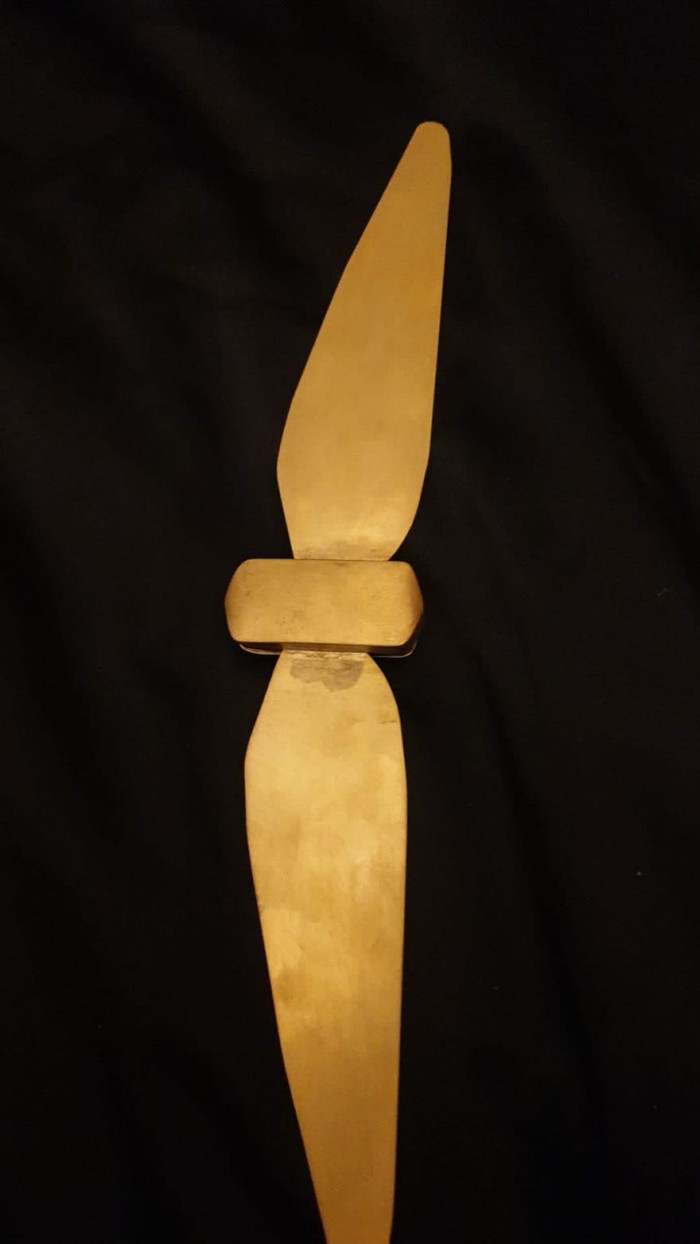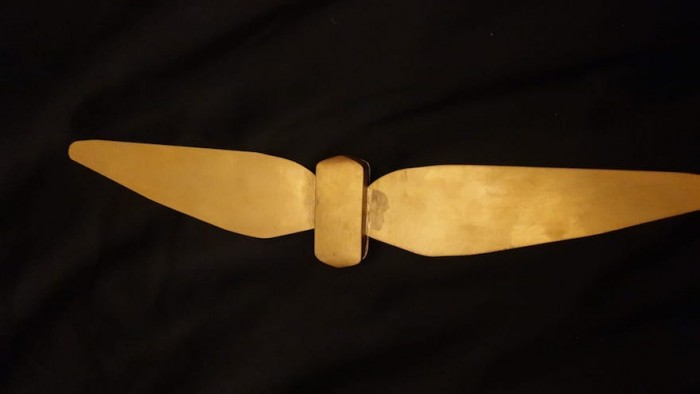Cyborg artists Neil Harbisson and Pol Lombarte are well-known for bringing the future into being, whether creating new sense organs or simply imagining ways of being that others haven’t dreamt of yet.
Harbisson, a Design Indaba alumnus, was born with the ability to see only in greyscale. He had a WiFi-enabled antenna implanted in his skull to allow him to ‘see’ colour by sensing infrared to ultraviolet light through vibrations in his head, thus creating an entirely new sense. The antenna has just celebrated its eighteenth birthday with a blowout party at the Smithsonian in Washington. “It’s reached the legal drinking age!” Harbisson jokes.
His friend, Lombarte, has collaborated with him on creating crypto-cyborg art and the pair has recently created non-fungible tokens (NFTs) that allow purchasers access to the artists’ unique sensory experiences. Harbisson has sold his perception of colour to Lombarte, while Lombarte has sold access to his heartbeat to Harbisson, which can be picked up via an EKG sensor he wears. But members of the public can also start buying these NFTs, sending colours directly into Harbisson’s head via their phones, say, or manipulating Lombarte’s heart rate from a distance over the internet. It’s all very experimental and gives a whole new meaning to the phrase “embodied in the blockchain”.
The pair are drawing attention to an emerging art form that fuses organisms with technology – but like fellow visionary Leonardo da Vinci, the cyborg artists take their cues from the natural world and the way it relentlessly adapts to evolve. Slow, systematic innovation is at the heart of their art. It may seem spontaneous, even anarchic – but you need a meticulous process to create something you might eventually implant in your body, and which will alter your way of experiencing the world.
Harbisson’s solar crown is a case in point. The wearable sensory headband was the prototype of an organ that can sense the passage of time, putting Einstein’s theory of relativity to the test.
“Since I was a child, I’ve been fascinated by the passage of time,” Harbisson tells Design Indaba. “I liked the fact that time could be measured. I studied music and composition, and music is of course a division of time – it shows how beautifully time can be divided. I also enjoyed breaking time and I thought it would be interesting to create something that would stretch it and allow me to be conscious of it – of the fact that it’s passing.”
Harbisson designed his prototype in 2016 and has been testing and refining it ever since. The solar crown began as a headband, but Harbisson was getting burnt by the intense heat, so he designed a collar-like device to wear around his neck instead. The device delivered a pulse of heat that indicated the precise location at which the sun hit the earth during its 24-hour rotation – but once again, the burning distracted Harbisson from the sensing itself.
“The solar crown was torture,” he admits. “I had to wear it for six months non-stop during lockdown. Also, the temperature of one’s body changes during the day, so it was often too hot – I would get burnt at around 6pm! Using heat is a challenge, and I thought it might be better to wear a device around my neck, where temperature is more regular – but it was still a bit warm, and I sometimes felt as if the collar were strangling me. I had to rethink the whole thing because one doesn’t want to be overly conscious of the organ itself.”
Creating such a device is a challenge because it has to be comfortable, biocompatible – with no allergenic components – and waterproof.
Harbisson toyed with the idea of a chip that would allow him to receive a small electric shock around every 60 seconds but turned to something more practical and more poetic: a pair of metallic wings, 35cm in diameter, which Harbisson will wear across his shoulder blades, under his clothing. The wings consist of a brass casing, a processor, a rechargeable 3.7-volt lithium battery and two vibration motors. The Arduino Nano processor has been programmed to set off the vibration motor every few minutes, as desired.
Before designing these “minimalist” wings, Harbisson and Lombarte studied the wings of a number of different bird species. “We wanted simple wings that wouldn’t interfere – that were smooth and wouldn’t get stuck on clothing, but which would still move and allow you to feel time,” Harbisson explains.
Once the strangeness of putting Einstein’s theory of relativity into practice has worn off, the experiment can really begin. “You shouldn’t really feel the organ – it should be something easy for the brain to ignore,” Harbisson says. “These wings will allow me to sense time in a more subliminal way than the ‘collar’, for example.”
The time-sensing device contains a microprocessor that can be programmed to vibrate at intervals of around ten minutes. “When my brain gets used to that, Pol [Lombarte] will start altering the interval without telling me, which will affect my perception of time,” Harbisson explains.
Why design a device like this at all?
“It’s the freedom to design our own perception of reality,” Harbisson reveals. “A new kind of freedom to design something we’ve never designed before, with the help of technology. This helps us to rediscover our surroundings and reveal elements of reality we’ve never been able to sense. It’s a new type of design or art, with a lot of possibility.”
The Sonochromatic Piano
Harbisson and Lombarte are currently working on their Sonochromatic Piano, which can externalise Harbisson’s sonochromatism – his ability to hear colour – for everyone. The ‘prepared piano’ allows one to turn lightbulbs on and off with technology that has existed since the 1880s. Copper has been fitted under each key and each note has been connected to a different coloured lightbulb. The colour of each light bulb relates to the frequency of each note. If the note F is played, the red lightbulb turns on; if C# is played the blue lightbulb turns on. The piano allows people to hear and see the colour of music – and if the audience is very far away from the piano, they will be able to see the music before they can hear it.
Read more:
The curious case of the cyborg artists.
Frugal science.
Credit: Neil Harbisson and Pol Lombarte








